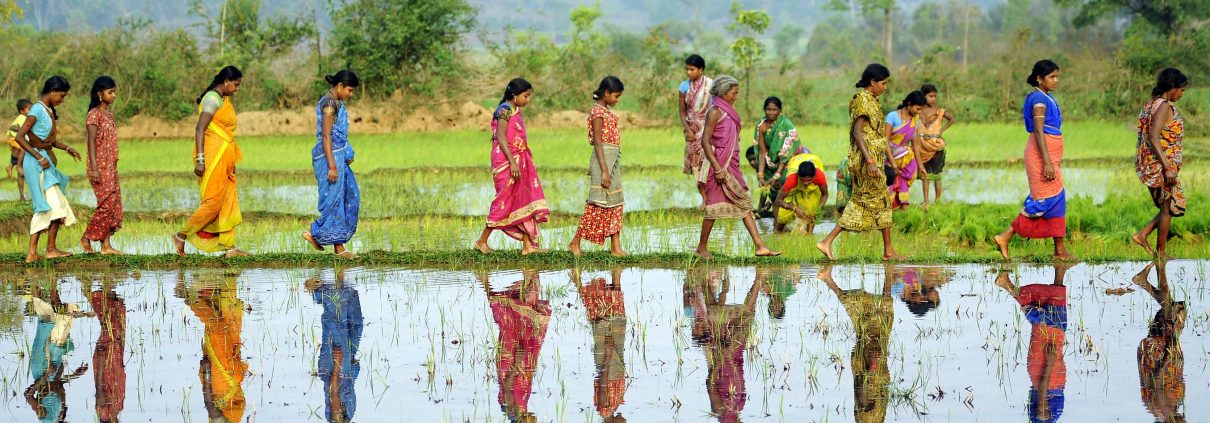Gender Budgeting a Must
As India inches closer to a new budget year, it needs to keep in mind certain facts in the context of the empowerment of women and the girl child. The central budget reflects the priorities of the government in different sectors and provides for resources accordingly. It is a well accepted fact that despite India’s impressive growth in the last few decades, not much has changed for the average Indian woman and girl.
The constitution of India provides for equal rights for women and also the required legal provisions but they remain poor, uneducated, unemployed and un-empowered. It is imperative that the budget be sensitive to the needs of women and their social, economic and political empowerment.
India adopted gender budgeting in 2005, about 60 ministries have active gender budgeting cells but the total allocation for women has hovered around 6 %. The Ministry for Women and Child Development is the main agency for the development of women within the country. Its allocation too has not increased in proportion to the rising expectations from it. This has resulted in India’s shockingly poor rankings on gender-related indexes.
According to the World Economic Forum Global Gender Gap Index calendar for 2016, India is at the 87thplace among the 144 countries of the world, neighbouring Bangladesh is at the 72nd place. Even developing African countries like Rwanda (5), Burundi (12) and Namibia (14) are way ahead of India. On the UNDP Gender Gap Index for 2015 which evaluated 188 countries, India (130) was behind its neighbours like Sri Lanka (73) and Maldiv (104). The participation of women in the workforce is a reliable indicator of women’s status and wellbeing in a country. Here too, India lags behind Bangladesh where the percentage of women in the workforce is 57.4; in India the percentage is just 27.
With superstition and son-preference lending an eager hand, the trend continues in a crucial field like education too. An Indian boy attends school for an average 7.2 years; by contrast, an Indian girl gets to attend school for an average 3.6 years. Some years ago, ASER had confirmed that while girls outnumber boys when it comes to enrolment in primary school, they also outnumber them when it comes to dropping out of school at 12. This, when the progressive and egalitarian constitution of India allows for equal rights for boys and girls and in 2002, the 86th amendment recognized education as a fundamental right of the children of India.
The middle class which traditionally validates trends to turn them into traditions generally deprives its girls of quality education taking umbrage behind the shortage of financial resources: it sends its boys to public schools while the girls are sent to the mushrooming ‘English medium’ schools or the ignored government schools. An average public school in Delhi charges no less than Rs. 5000 per month as school fees, not including the frequent ‘other expenses’. Parents cough up to Rs. 100,000 per year for one public school going child. The tax rebate they get is a paltry few thousand. If only the Government rationalized the tax system vis-a-vis education and gave tax rebates based on the actual expenses borne by parents! Such a step would have meant more middle class girls in public schools.
The worst hit are the girl children in rural schools. About 33% of all rural schools are single teacher schools where the teacher is also responsible for cooking and distributing the mid-day meal to the pupils. The combination of conservative, problem-ridden community and disinterested service providers has resulted in the failure of ambitious government schemes like Sarva Shiksha Abhiyan and Sakshar Bharat Mission that cost the tax payer billions of rupees.
PM Modi has already taken some laudable steps to address the problem of the secondary status accorded to women in Indian society. ‘Beti Bachao-Beti Padhao’ and the new provision for providing Rs. 6,000 to pregnant women to ensure a healthy and nutritious diet during pregnancy are two such key programmes. Both these programmes need to be broadened to include issues of girls’ education and safety in schools and better nutrition for lactating mothers.
Pension plans for widows and the elderly too need to be rationalized in accordance with rising costs of health care. Women workers in the unorganized sector are a section of our population which has almost nil access to government run welfare schemes. Another area that needs to be looked into is the delivery of justice in crime against women. There is a huge gap between the registration of criminal cases and their timely disposal. The police system needs to be sensitized to the question of women’s dignity and safety.
The government’s ambitious digitization programme and AADAHR card could be roped in to tackle most of these issues but long term, effective at the ground level results would require serious gender budgeting on an ongoing basis and constant monitoring.
No time like now to begin the trend.



